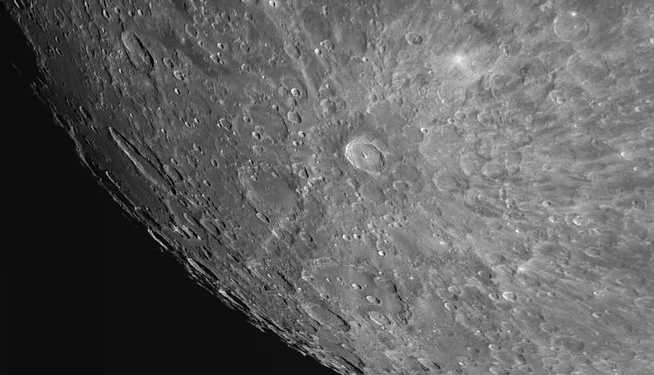Indian Space Research Organization (ISRO), the space research agency of the government of India will launch a rover in October to explore virgin territory on the Moon’s surface and analyze crust samples for signs of water and helium-3. There is an abundance of helium-3 on the Moon, having been embedded in the upper layer of regolith by solar winds over billions of years. It is a non-radioactive isotope of helium and a source of waste-free nuclear energy. The amount of helium-3 that is deposited on Moon could be worth trillions of dollars. On the question of bringing the Helium-3 from Moon, Chairman of the Indian Space Research Organization K. Sivan said, “the countries which have the capacity to bring that source from the moon to Earth will dictate the process, I don’t want to be just a part of them, I want to lead them.”
The helium-3 is deposited on the south side of the moon where no other country has gone till now. The governments of the U.S., China, India, Japan, and Russia have increased their activities in space exploration, and on the other hand private players like Elon Musk, Richard Branson, Jeff Bezos have planned to launch satellites, robotic landers, astronauts, and tourists into the cosmos. In fact, Elon Musk had said that he wants to colonize Mars and wants to retire there.
The rover landing is just one step of ISRO’s activity on the Moon; the whole plan includes putting a space station in orbit and potentially, an Indian crew on the moon. The ISRO is waiting for government’s nod and timeframe in which the government wants it to complete the project. “We are ready and waiting, we’ve equipped ourselves to take on this particular program.”, said Dr. Kailasavadivoo Sivan. K Sivan is an aeronautics engineer who joined ISRO in 1982, having also held the position of Director of Vikram Sarabhai Space Center which is a major space research center under ISRO.
China is the only country to put a lander and rover on the moon this century with its Chang’e 3 mission in 2013. In the U.S., President Donald Trump signed a directive calling for astronauts to return to the moon, and NASA’s proposed $19 billion budget this fiscal year calls for launching a lunar orbiter by the early 2020s. ISRO’s estimated budget is less than a 10th of that about $1.7 billion, but low budget is not a problem for ISRO because earlier it has completed many projects by spending thousand times lesser funds than NASA spends.
This won’t be India’s first moon mission. The Chandrayaan-1 craft, launched in October 2008, completed more than 3,400 orbits and ejected a probe that discovered molecules of water on the surface for the first time. The upcoming launch of Chandrayaan-2 includes an orbiter, lander and a rectangular rover. The six-wheeled vehicle, powered by solar energy, will collect information for at least 14 days and cover an area with a 400-meter radius. On the question of the competition between private enterprises and the government to colonize the Moon, Rakesh Sharma, who spent almost eight days aboard a Russian spacecraft in 1984, said “nations and private enterprises instead should work together to develop human colonies elsewhere as Earth runs out of resources and faces potential catastrophes such as asteroid strikes. You can’t go to the moon and draw boundaries, I want India to show that we’re capable of utilizing space technology for the good of people.”





























